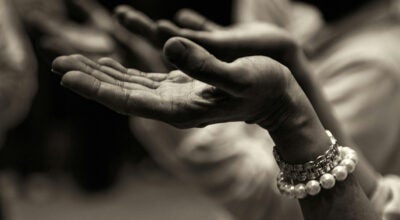Dealing with juvenile crime: Efforts worth examining
Published 7:21 pm Tuesday, August 20, 2019
It’s ugly, the descent of little Johnny to full-grown social menace. The cycle of being picked up, locked up and probated. Inspirational talks getting nowhere. Parents and youth court advocates wringing their hands. Fresh starts running out.
Equally ugly is the problem not-so-little Johnny bestows upon a community — juvenile crime.
In the marketplace of ideas, curfews rank as a perennial favorite in dealing with such problems. Moms and mayors alike sing their praises, and even Presidents join in the chorus. In 1884 President Benjamin Harrison called curfews “the most important municipal regulation for the protection of children in American homes from the vices of the street.” More than a hundred years later, when youth crimes like murder, rape and assault were skyrocketing, President Bill Clinton signed a measure allotting $75 million to help local governments enact curfews and other anticrime ordinances.
But while curfews may be a good tool for parents and a popular platform for politicians, can they really curtail Johnny’s criminal bent? Not likely, according to the experts at the U. S. Department of Justice.
According to data on their website, juvenile violence peaks at 3 p.m. on school days and 8 p.m. on non-school days. Only 13 percent of juvenile crime occurs during the standard curfew hours of 10 to 6 p.m. The DOJ’s stated conclusion? “The efforts to reduce juvenile crime after school would appear to have the greater potential to decrease a community’s violent crime rate than do juvenile curfews.”
So, what efforts are worth examining?
Increased Enforcement: During the 1990s, crime rates in New York City famously dropped. When violent crimes declined by more than 56 percent, many attributed it to the city’s “get-tough” policies carried out by former Mayor Rudolph Giuliani. The most prominent of his policy changes was the aggressive policing of lower-level crimes, an effort sometimes called the “broken windows” approach to policing. In this view, small infractions lead to larger ones. As Mr. Giuliani told the press in 1998, “Obviously murder and graffiti are two vastly different crimes. But they are part of the same continuum, and a climate that tolerates one is more likely to tolerate the other.” Under his tenure, misdemeanor arrests increased 70 percent. The police force grew by 35 percent.
Citywide Collaboration: In 2017, Baltimore Mayor Catherine Pugh recognized crime was out of control in her city. She ordered various city agencies — from Public Works to Recreation and Parks — to meet with police every morning. It was an all-hands-on-deck approach acknowledging that each department would play a part in combatting crime. Daily meetings between department heads and the police commissioner ensured that everyone who worked for the city got on board.
Consequence Education: This past May students in Wise County, Virginia, took part in a courts-to-classrooms initiative in which local attorneys and prosecutors dramatized courts proceedings. The program, in its fourth year, uses re-enactments of actual cases from Wise County General District Court to show students the consequences of breaking laws. The first case students watched this year involved a charge of assault and battery, another a charge of underage possession of alcohol. Afterwards, attorneys fielded questions from the student audience concerning the possible permanence of juvenile criminal records.
Violent Content Monitoring: A position paper published by the American Academy of Family Physicians says the connection between viewing screen violence and acting it out is nearly as strong as the association between cigarette smoking and lung cancer. They suggest no TV for those under 2, co-viewing with older kids, not relying on ratings systems and choosing “healthy alternatives” to media consumption. Included in their report:
• Video games offer players the opportunity to be “virtual perpetrators” by assuming the roles of aggressors and soldiers. These interactive games also reward players for successful violent behavior.
• More than 80 percent of the violence in music videos is perpetrated by attractive people, often accompanied by sexual imagery and beautiful scenery, potentially linking it to pleasurable experiences.
• Studies have found that 91 percent of movies on television contained violence, even extreme violence. The amount of gun violence in top grossing PG-13 films has more than tripled since the introduction of the rating in 1985. Popular PG-13 films contained significantly more gun violence than R-rated films.
• More than 46 percent of television violence occurs in cartoons. These programs are more likely to juxtapose violence with humor and less likely to show the long-term consequences of violence.
Kim Henderson is a freelance writer. Contact her at kimhenderson319@gmail.com.





